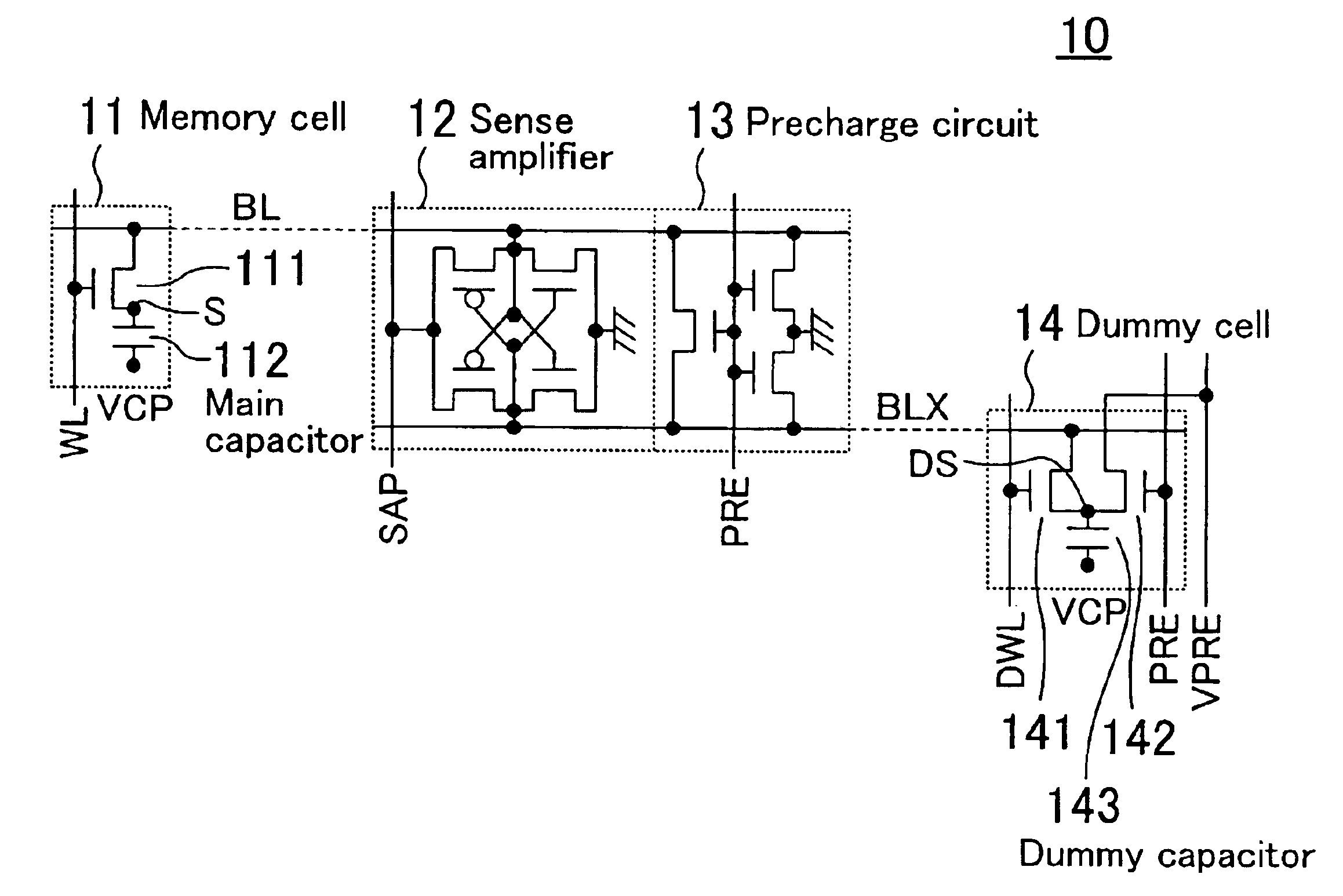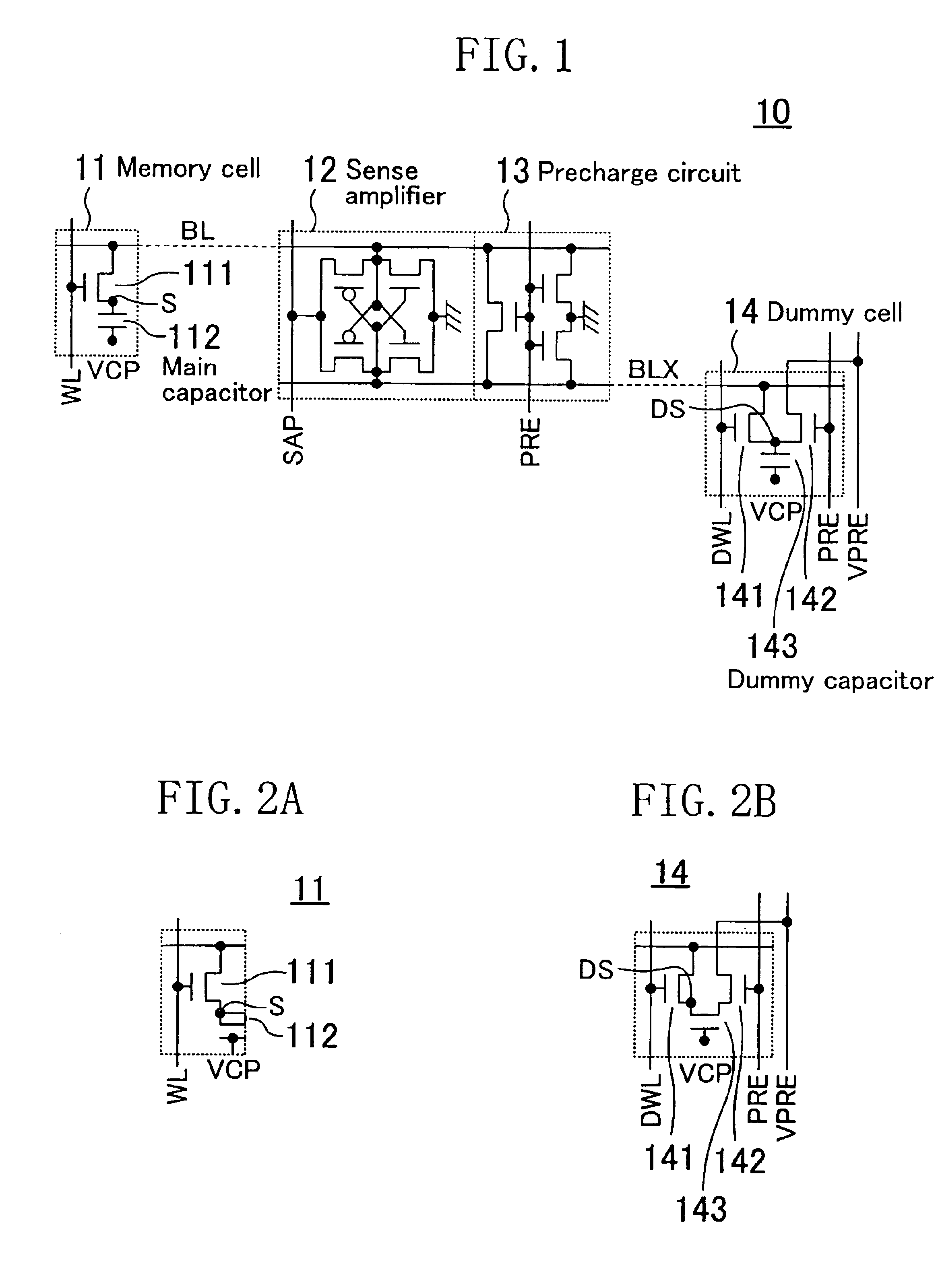Semiconductor memory circuit
- Summary
- Abstract
- Description
- Claims
- Application Information
AI Technical Summary
Benefits of technology
Problems solved by technology
Method used
Image
Examples
first embodiment
[0050](First Embodiment)
[0051]FIG. 1 illustrates the circuit configuration of a semiconductor memory circuit in accordance with a first embodiment of the present invention. The semiconductor memory circuit of this embodiment, a DRAM 10 of NMOS type, includes a memory cell 11, a CMOS sense amplifier 12, a precharge circuit 13, and a dummy cell 14. The memory cell 11 is at the intersection of a word line WL and a bit line BL. The CMOS sense amplifier 12 serves to sense and amplify a potential difference between the pair of bit lines BL and BLX. The precharge circuit 13 precharges the bit line pair BL and BLX. The dummy cell 14 is provided at the intersection of a dummy word line DWL and the bit line BLX.
[0052]The memory cell 11 is a 1-transistor cell composed of an NMOS transistor 111 and a main capacitor 112. The NMOS transistor 111 is turned on by activating the word line WL while the bit line BL is inactive, thereby electrically connecting the main capacitor 112 to the bit line BL....
second embodiment
[0074](Second Embodiment)
[0075]FIG. 8 illustrates the circuit configuration of a semiconductor memory circuit in accordance with a second embodiment of the present invention. The semiconductor memory circuit of this embodiment, a DRAM 20 of PMOS type, includes a memory cell 21, a CMOS sense amplifier 22, a precharge circuit 23, and a dummy cell 24. The memory cell 21 is at the intersection of a word line WL and a bit line BL. The CMOS sense amplifier 22 serves to sense and amplify a potential difference between the pair of bit lines BL and BLX. The precharge circuit 23 precharges the bit line pair BL and BLX. The dummy cell 24 is provided at the intersection of a dummy word line and the bit line BLX.
[0076]The memory cell 21 is a 1-transistor cell composed of a PMOS transistor 211 and a main capacitor 212. The PMOS transistor 211 is turned on by activating the word line WL when the bit line BL is inactivated, thereby electrically connecting the main capacitor 212 to the bit line BL.
[...
PUM
 Login to View More
Login to View More Abstract
Description
Claims
Application Information
 Login to View More
Login to View More - R&D
- Intellectual Property
- Life Sciences
- Materials
- Tech Scout
- Unparalleled Data Quality
- Higher Quality Content
- 60% Fewer Hallucinations
Browse by: Latest US Patents, China's latest patents, Technical Efficacy Thesaurus, Application Domain, Technology Topic, Popular Technical Reports.
© 2025 PatSnap. All rights reserved.Legal|Privacy policy|Modern Slavery Act Transparency Statement|Sitemap|About US| Contact US: help@patsnap.com



